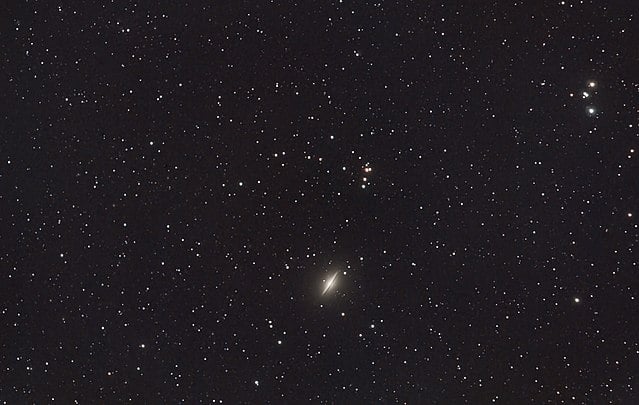
Astronomers are scratching their heads as deep field images obtained by the James Webb Space Telescope (Webb or JWST) have revealed a perplexing discovery.
According to a study published in the prestigious journal ‘Nature‘ on February 22, 2023, galaxies with a similar mass to our own Milky Way and brimming with mature red stars appear to be scattered throughout the cosmos.
This surprising discovery has left scientists stumped and eager to delve deeper into this cosmic conundrum.
Astronomers believe that these galaxies may have been formed during the earliest stages of the universe, approximately 500 to 700 million years after the Big Bang – over 13 billion years ago. These colossal galaxies are nearly as massive as our very own Milky Way and contain an astonishing number of stars.
Astrophysicist Ivo Labbe, the lead author of a study, describes them as “truly bizarre creatures” that are radically different. He compares their size to that of a 1-year-old baby standing just under 3 feet tall, while the Milky Way is like an average adult. This shows how unusual and unique the early universe was.
The JWST discovers enormous distant Galaxies that should not exist.
1️⃣
Giant, mature Galaxies seem to have filled the Universe shortly after the Big Bang, and astronomers are puzzled.Six distant Galaxies discovered in early JWST images appear surprisingly large for their age. pic.twitter.com/oPb4JWT3QF
— 𝕃𝕦𝕚𝕤 𝔸𝕝𝕗𝕣𝕖𝕕𝕠⁷ ∞∃⊍ ≈ ᑕOՏᗰIᑕ ᗰᗴՏՏᗴᑎᘜᗴᖇ (@LuisADomDaly) February 22, 2023
Galaxies bigger than expected
Astronomers thought that the first galaxies appeared shortly after the “dark ages” of the universe. It was the time when there were only hydrogen atoms. So, finding early galaxies is not surprising.
However, the galaxies discovered in the Webb images are much bigger than expected and contain old stars.
These new findings conflict with what we previously knew about how the universe evolved and don’t match observations made by the Hubble Space Telescope, which was less powerful than Webb.
Joel Leja, an assistant professor of astronomy and astrophysics at Penn State, said that they expected early galaxies to be young and small. Previous studies with the Hubble telescope found small, blue baby galaxies that just formed from the cosmic soup and are starting to build their stars and structures.
Study the light spectra of new galaxies
The images of the strange galaxies were taken by Webb’s Near Infrared Camera (NIRCam) as part of a program called Cosmic Evolution Early Release Science (CEERS).
Astronomers will now use Webb to get light spectra of these galaxies. Spectra break down light into its different wavelengths and can help reveal the chemical and physical properties of the galaxy.
According to Leja, the spectra of these galaxies provide precise distances and can help identify them. The distance and identity of an object are linked, so if we know one, we can determine the other. A spectrum will confirm if their hypotheses about the galaxies are correct.
Rewriting the old theories
The first observations from the Webb telescope were released a little over seven months ago. Now, scientists are having a hard time revising their theories about the early universe. The new data provided by the grand observatory is proving to be a significant challenge for them.
Astronomers now believe that the first stars began forming 100-200 million years after the Big Bang. These stars were much larger than our sun, possibly up to 1,000 times more massive, but had a shorter lifespan.
See all the latest news from Greece and the world at Greekreporter.com. Contact our newsroom to report an update or send your story, photos and videos. Follow GR on Google News and subscribe here to our daily email!



